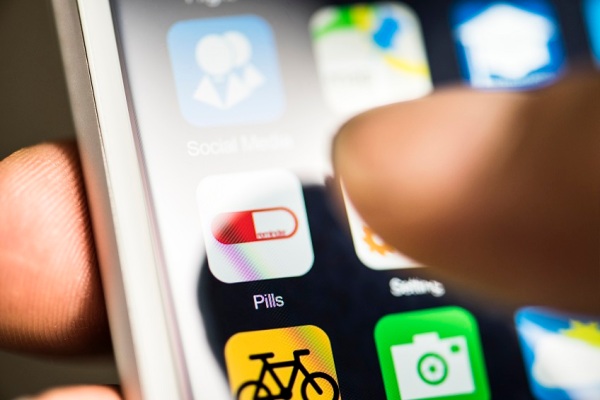
People are living longer, but not necessarily healthier. It’s unsettling to think about it in these terms but, in our lifetime, it’s unlikely that any of the lifestyle related diseases—like obesity, diabetes and heart disease—will be cured by a pill. Yet the most effective weapons we have to battle chronic disease include more daily activity and exercise, a healthier diet and weight management, and lower stress — behaviors that are seemingly the most difficult to sustain.
Healthcare providers are at a distinct disadvantage in this battle against chronic conditions. Patients need intervention far before symptoms of a disease start to become evident. And then they need sustained, consistent support if we are to achieve true behavior change. While interventions such as mobile and digital health solutions have the potential to improve management of and even prevent some disease, our reimbursement system is better suited for acute care, and reimbursement for preventative care is sorely lacking. Health plans have tried, mostly without success, to cajole us to a healthier state. Let’s face it: the burden of chronic illness prevention is on the patient.
So, are we doomed? Is it time to throw in the towel and declare these chronic conditions the victor? I say not so fast.

Digital therapeutics can help people make positive and sustainable behavior change that can be as effective as taking a medication. It’s time to break free of the traditional paradigms of disease management and embrace the future by leveraging technology to fully realize the benefits of therapeutics. Let’s create a new cocktail, mixing connected health technologies with proven medicines to create effective therapies that truly do go beyond the pill.
Specifically, for diseases that are largely related to lifestyle choices — including obesity, diabetes and hypertension — we must think of all the tools in our bag, including interventions such as behavioral therapy, coaching and support groups. Add to that mobile technologies, apps, sensors and the Internet of Things, along with the new push for value-based care, and we may be onto something.
These technologies make it possible to reach entire populations on a large scale — before, during and after a chronic condition is detected. Effective interventions to motivate and sustain positive behavior change can be delivered continuously. All this and the patient doesn’t have to set foot in a hospital or doctor’s office, which fits nicely into the construct noted above – that consumers/patients must own this.
In my recently published book, The Internet of Healthy Things, I devote an entire chapter to what I’m calling ‘digital therapeutics,’ which I define as therapeutics as an intervention delivered by digital means that, independently of any medications changes, has a positive effect on clinical outcomes. I also site three very interesting examples of successful programs that are improving the care, and the outcomes for treating diabetes.
We have also pioneered a number of similar initiatives right here at Partners Connected Health.

It’s fascinating and inspiring to think that a digital tool, mobile app or wearable device can compete with chemical therapeutics. This is the dawn of a new era. Digital offerings are now providing physical and occupational therapy at home for patients undergoing rehabilitation for stroke and other conditions, cognitive behavioral therapy to treat depression, anxiety and the like, and blood pressure and heart monitoring to detect debilitating events such as stroke and atrial fibrillation.
A number of innovative companies are taking an exciting new direction, creating ‘no-burden’ monitoring, passively collecting data via compatible devices and smartphones that a patient already uses regularly. Once the program or app is downloaded, the patient doesn’t need to do a thing, hence the no-burden. Interestingly, we’ve found that even the seemingly simple act of putting on a wearable or opening an app every day can prove to be too much for some individuals, causing health and activity tracking to fall to the wayside over time.

I’m encouraged to report that there are already several no-burden monitoring programs that are showing promise. One example is Sonde, a Boston-based company, developing technology that can monitor speech and other sounds — without storing or analyzing the content of their speech — enabling long-term monitoring of mental, emotional and physical health conditions. This technology works in the background of devices that most people already use every day, and could be very useful for patients chronic conditions requiring challenging treatment regimens.
We need more evidence that these digital interventions have the staying power to truly change behavior in the long term, in order to get large populations of people to stop smoking, lose weight or otherwise improve their health. Reimbursement and regulation also need to catch up with what appears to be low-risk technology, and address the ever-present concerns about privacy and security.
I say it’s time to pull out all the stops and put in the work to create the preventative and treatment strategies needed to affect behavior change that will, in turn, change the course of chronic disease on a population-level scale. Our healthcare system, as it stands now, cannot sustain the high cost and resource utilization that characterizes today’s chronic disease management protocols. We can — and must — make chronic disease management an efficient part of care delivery. I believe digital medicine is the way forward.
Are you with me?
Wanna share this post
- Click to share on Twitter (Opens in new window)
- Click to share on Facebook (Opens in new window)
- Click to share on LinkedIn (Opens in new window)
- Click to share on Tumblr (Opens in new window)
- Click to share on Pocket (Opens in new window)
- Click to share on Reddit (Opens in new window)
- Click to share on Pinterest (Opens in new window)
- Click to share on WhatsApp (Opens in new window)
- Click to share on Telegram (Opens in new window)
- Click to share on Skype (Opens in new window)
